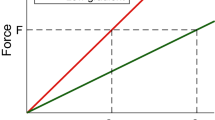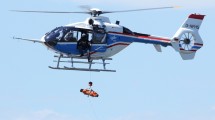Abstract
Active side sticks offer the possibility to adjust the force-feel characteristics to account for various piloting tasks and flight conditions. This promises a decrease in pilot workload and an increase in handling qualities. However, the optimum force-feel characteristics are not well understood and modeled; therefore, their tuning still rely on experimental methods. Experimental pilot-in-the-loop methods are time-consuming, expensive and have to be repeated with every change in control law dynamics. If a purely mathematical method for force characteristics optimization could be developed based on a better understanding of the principles underlying good force-feel systems, then the optimization could be done more efficiently and offline. This paper presents our current developments and achievements towards this new understanding to assess if and how a purely mathematical method could be derived from selected experiments. Even if this final goal could not be derived yet, the paper presents the selected approach and the lessons learned so far. More precisely, a simulator-based experiment was developed to provide the data for the later analyses and the identification of mathematical models suitable for that purpose. For this experiment, a roll tracking task is considered whose evaluation is based on both a qualitative (Cooper–Harper rating) and a quantitative criterion. The very encouraging results obtained so far on this scenario are detailed.




















Similar content being viewed by others
Abbreviations
- AC:
-
Attitude command
- DLR:
-
Deutsches Zentrum für Luft- und Raumfahrt
- EC:
-
Eurocopter
- FHS:
-
Flying helicopter simulator
- RC:
-
Rate command
- RMS:
-
Root mean square
- t :
-
Time
- Φt :
-
Target helicopter roll angle
- Φe :
-
Roll angle error
- Φa :
-
Actual helicopter roll angle
- δ Lat :
-
Side stick deflection
- F :
-
Force
- ω s :
-
Side stick eigenfrequency
- ω N :
-
Neuromuscular eigenfrequency
- k :
-
Spring constant
- D :
-
Relative side stick damping
- τ P :
-
Pilot time delay
- τ H :
-
Helicopter time delay
- s :
-
Laplace parameter
- G :
-
Gain
- \( L_{{\delta_{\text{Lat}} }} \) :
-
Lateral control effectiveness
- p :
-
Roll rate
- \( \dot{p} \) :
-
Roll acceleration
- \( \ddot{p} \) :
-
Jerk
- m :
-
Side stick mass
- b :
-
Viscose damping
- ς N :
-
Relative neuromuscular damping
- L p :
-
Roll damping derivative
- \( L_{{{\dot{\text{p}}}}} \) :
-
Roll damping derivative
- K P :
-
Proportional gain, pilot gain
- K I :
-
Integral gain
- T L :
-
Lead time constant
- T I :
-
Lag time constant
- T K :
-
Low-frequency lead time constant
- T K′ :
-
Low-frequency lag time constant
- T N1 :
-
Neuromuscular high-frequency lag time constant
- K AR1, K AR2 :
-
Air resonance term coefficients nominator
- K AR1′, K AR2′ :
-
Air resonance term coefficients denominator
- F Correction :
-
Side stick correction function
References
Whalley, M., Hindson, W., Thiers, G.: A comparison of active sidestick and conventional inceptors for helicopter flight envelope tactile cueing. In: 56th Annual Forum of the American Helicopter Society, Virginia Beach, VA, USA, 2–4 May, 2000
Jeram, G.: Open platform for limit protection with carefree maneuver applications. PhD thesis, Georgia Institute of Technology, Atlanta, GA, USA (2004)
Morgan, M.: An initial study into the influence of control stick characteristics on the handling qualities of a fly-by-wire helicopter. Advisory Group for Aerospace Research and Development, AGARD-CP-508, pp. 18-1–18-13 (1991)
Grünhagen, W., Müllhäuser, M., Abildgaard, M., Lantzsch, R.: Active inceptors in FHS for pilot assistance systems. In: 36th European Rotorcraft Forum, Paris, France, 7–9 September, 2010
Gibson, J., Hess, R.: Stick and feel system design. Advisory Group for Aerospace Research and Development, AGARD-AG-332, Neuilly-sur-Seine, France (1997)
Watson, D., Schroeder, J.: Effects of stick dynamics on helicopter flying qualities. AIAA-90-347, Moffett Field, CA, USA (1990)
Johnston, D., Aponso, B.: Design considerations of manipulator and feel system characteristics in roll tracking. NASA Contractor Report 4111, Hawthorne, CA, USA (1988)
Aponso, B., Johnston, D.: Effect of Manipulator and Feel System Characteristics on Pilot Performance in Roll Tracking, Hawthorne, CA, USA (1988)
Mitchell, D., Aponso, B., Klyde, D.: Effects of cockpit lateral stick characteristics on handling qualities and pilot dynamics. NASA Contractor Report 4443, Hawthorne, CA, USA (1992)
ADS-33E-PRF, Aeronautical Design Standard Performance Specification, Handling Qualities Requirements for Military Rotorcraft, United States Army Aviation and Missile Command Engineering Directorate, Redstone Arsenal, AL, USA (2000)
Padfield, G.: Helicopter Flight Dynamics, 2nd edn. Blackwell, Oxford (2007)
Hess, R.: Theory for aircraft handling qualities based upon a structural pilot model. AIAA, Guidance and Control Conference, Monterey, CA, USA, 17–19 August, 1987
Hovmark, G.: Test Techniques for Experimental Detection of PIO, Group for Aeronautical Research and Technology in Europe, GATEUR/TP-120-03 (2000)
Cooper, G., Harper, R.: The use of pilot rating in the evaluation of aircraft handling qualities. NASA TN-5153 (1969)
Heffley, R.: Study of helicopter roll control effectiveness criteria. NASA Contractor Report 177404, Moffett Field, CA, USA (1986)
S.E.A. Datentechnik GmbH 2007, “2Indicate-User Manual”, Köln (2007)
Seher-Weiß, S., von Grünhagen, W.: EC135 System identification for model following control and turbulence modeling. In: 1st CEAS European Air and Space Conference, CEAS-2007-275, Berlin, 10–13 September, 2007
Hamers, M., Lantzsch, R., Wolfram, J.: First control system evaluation of the research helicopter FHS. In: 33rd European Rotorcraft Forum, Kazan, Russia, 11–13 September, 2007
Höhne, G.: Roll Ratcheting—cause and analysis. Dissertation, TU Braunschweig (2001)
McRuer, D., Krendel, E.: Mathematical models of human pilot behavior. Advisory Group for Aerospace Research and Development, AGARD-AG-188, Neuilly-sur-Seine, France (1974)
Magdaleno, R., McRuer, D.: Experimental validation and analytical elaboration for models of the pilot’s neuromuscular subsystem in tracking tasks. NASA Contractor Report 1757 (1971)
Hess, R.: Structural model of the adaptive human pilot. AIAA Guidance and Control Conference, Boulder, CO, USA, 6–8 August, 1979
Hess, R., Ronald, F.M.: Modeling the human pilot controlling a rotorcraft with time-varying dynamics. In: 65th Annual Forum of the American Helicopter Society, Grapevine, TX, USA, 27–29 May, 2009
Tischler, M., Remple, R.: Aircraft and rotorcraft system identification—engineering methods with flight test examples, 1st edn. AIAA Education Series, Moffet Field, CA, USA (2006)
Sahani, N.: Envelope protection systems for piloted and unmanned rotorcraft. PhD thesis, Pennsylvania State University, PA, USA (2005)
Wagner, C.: Effects of mass on aircraft sidearm controller characteristics. NASA Technical Memorandum 104277, Edwards, CA, USA (1994)
Author information
Authors and Affiliations
Corresponding author
Additional information
This paper is based on a presentation at the German Aerospace Congress, September 27–29, 2011, Bremen, Germany.
Rights and permissions
About this article
Cite this article
Nonnenmacher, D., Müllhäuser, M. Optimization of the equivalent mechanical characteristics of active side sticks for piloting a controlled helicopter. CEAS Aeronaut J 2, 157–170 (2011). https://doi.org/10.1007/s13272-011-0022-8
Received:
Revised:
Accepted:
Published:
Issue Date:
DOI: https://doi.org/10.1007/s13272-011-0022-8




